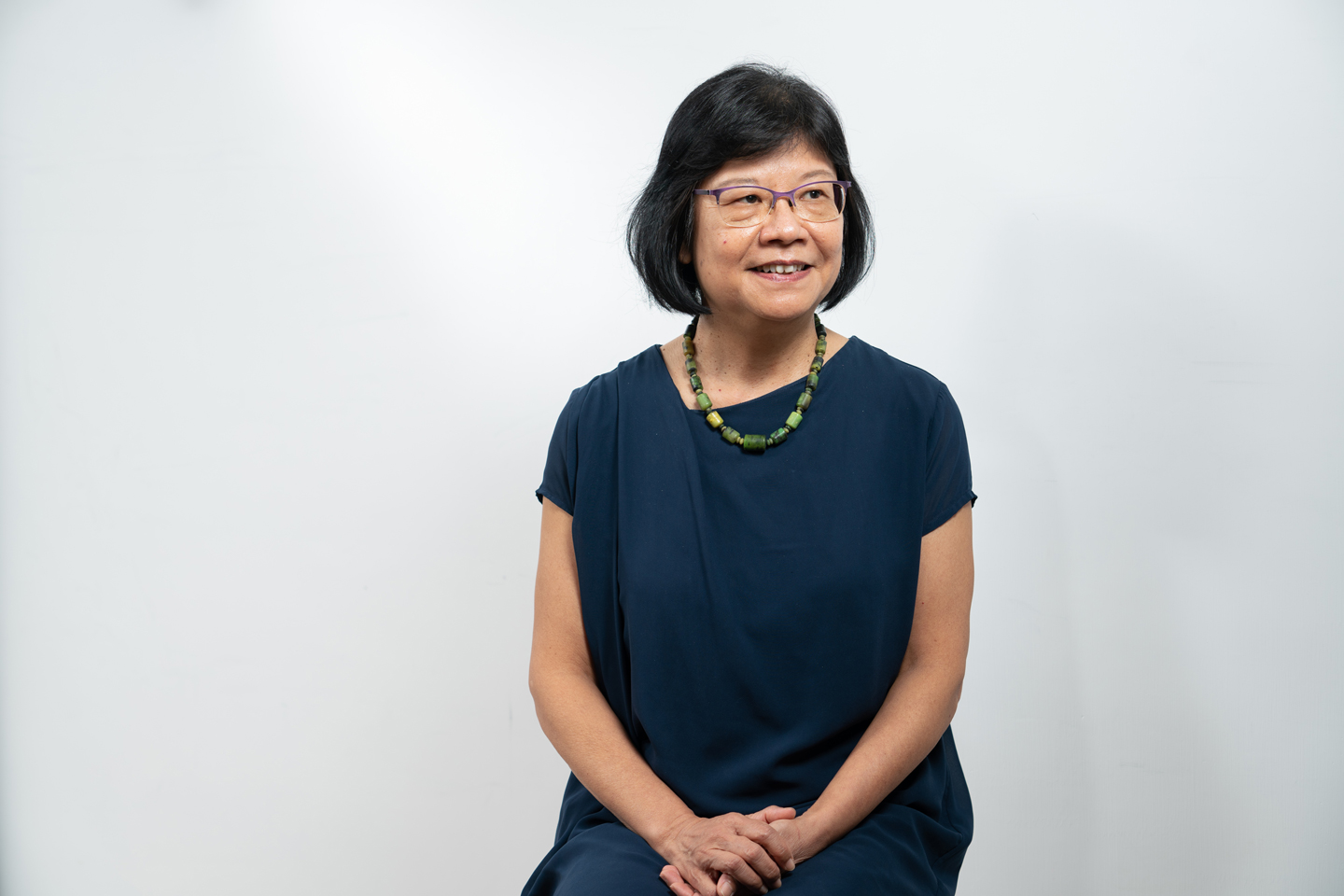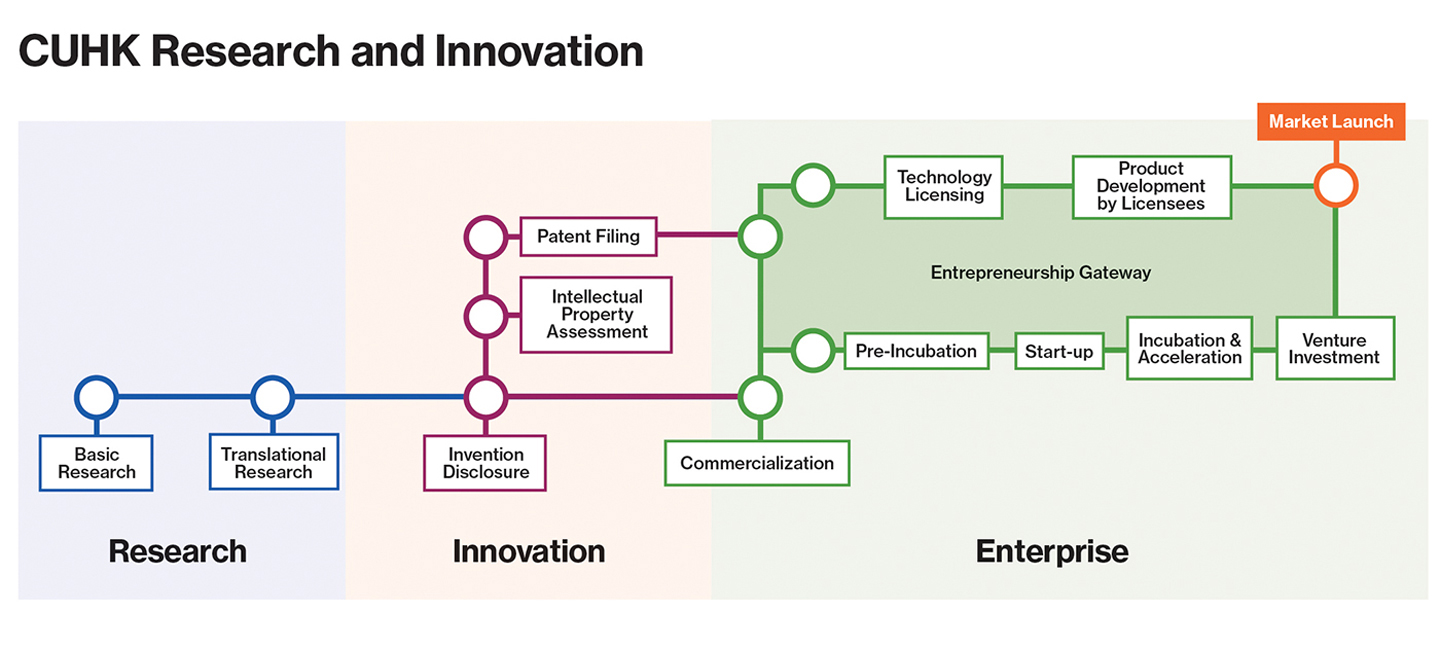Dear readers, With the launch of e-newsletter CUHK in Focus, CUHKUPDates has retired and this site will no longer be updated. To stay abreast of the University’s latest news, please go to https://focus.cuhk.edu.hk. Thank you.
A Scientist who Makes Sense of the Senses
Mai-har Sham shares her visions for research@CUHK
To the evolutionary biologist Julian Huxley (1887–1975), brother of Aldous (1894–1963), amoeba cannot read; worm has no eyes to look; and speech is absent from the rook. The development of the sense organs and intelligence need to go through baptism by evolution.
Human beings are not the only creature endowed with the five senses—sight, sound, smell, taste and touch. The ant probably has them, too. But, alas, ‘The Ant herself cannot philosophize—/While Man does that, and sees,…/And flies, and talks, and is extremely wise…’
Prof. Mai-har Sham, Pro-Vice-Chancellor (Research) and Choh-Ming Li Professor of Biomedical Sciences of CUHK, is very much at the cutting edge of developmental biological research. She has worked with two types of cell—the neural crest cells and placodal cells which, in the embryonic stage of mammalian development, have the potential of developing into structures that serve as the neuronal pathways for sensory stimuli to reach the brain through the relevant sense organs.

Her team has found that placodes play a pivotal role in influencing and determining the formation of maxillofacial sense organs and the functioning of seeing, hearing, smelling and tasting. Should anything go wrong with these cells in the embryonic or foetal state, congenital defects may result. Understanding how these cells work would point the way to regenerate parts and reboot functions to remedy what has gone wrong in neonates or geriatrics.
The placodes are elusive, to say the least, for they would transform or disappear when the relevant sense organs are formed. Hence, there has been scant literature on them due to the difficulty of detecting and observing their form and development. Such elusiveness, however, has not prevented Professor Sham and her team from making sense of how sentient beings make sense of the physical world.
Professor Sham received her BSc and MPhil in Biology from CUHK. On receiving a Croucher Foundation Scholarship, she went on to pursue a PhD in Biochemistry at the University of Cambridge. After a long period of distinguished service in academic research and university administration, she returned to her alma mater in the summer of 2020 to steward its research missions and initiatives.
She spent the last year carefully canvassing the research and innovation culture at CUHK—what is being done, what is being done well, and how it might be done better. As Co-chairperson of the Sub-group on Research and Innovation for the CUHK Strategic Plan 2021–2025, she has helped formulating the strategies for research in the next five years with the view to integrate research, innovation and enterprise into a dynamic and productive continuum to deliver tangible benefits to society. The roadmap for CUHK research and innovation can be found in the figure below.

What Professor Sham found on campus was a thriving research and innovation economy dipped in a collegial ethos. Talented researchers collaborated on multitudinous projects of relevance producing remarkable results with significant impact. Having said that, the Pro-Vice-Chancellor (Research) also thought that CUHK could do better in several areas.
The research and innovation ecology at CUHK has room for further internationalization. CUHK research teams can be bolder in taking on issues that are of global import. Teams can recruit or welcome members from different backgrounds to broaden their perspectives and strengthen synergies and cross-fertilization of ideas.
While CUHK has assembled a cast of talented and dedicated researchers on all levels and in different positions, some disciplines or areas could still use a critical mass. The talent pool that drives the engine of research and innovation can be augmented as well as diversified, and not just for professoriate or senior positions. Young or early career researchers—including postgraduate students and post-doctoral fellows—would make a big difference in strengthening the University’s research capability as a whole and creating greater momentum. It is therefore important to foster a culture conducive to the active participation of young researchers with creativity and imagination.
Being one of the homegrown scientists herself, Professor Sham understands and appreciates the modesty and humility characteristic of CUHK members. But she also thought that a little competitiveness would go a long way to promote the innovative or entrepreneurial spirit that underpins the University’s research strategies.

Looking ahead, Professor Sham aims to create more opportunities for researchers to connect to outside academic and research and innovation networks and resources. Financially, CUHK is quite well-endowed but world-class research would mean that it must turn outward for support from the government, the industry and the corporate sectors. The recent funding results of the ‘General Research Fund (GRF) and the Early Career Scheme (ECS) 2021/22 Exercise’, which register increases in both the number of successful applications and the amount awarded, are indeed very encouraging.
It is also in her plans to enhance the research infrastructure, promote a digital culture and streamline procedures so that greater efficiency can be achieved and impact felt. CUHK has been doing very well in terms of research performance and output, as is evident once again in the results of the ‘Research Assessment Exercise (RAE) 2020’ announced by the University Grants Committee. In many areas, CUHK has demonstrated international excellence and world-leading performance. She is confident that CUHK will go from strength to strength in fulfilling its mission of pushing the frontiers of knowledge and translating it into tangible benefits for the betterment of society.
What cannot be measured in terms of funds awarded, articles published or patents filed is research integrity, or the ‘soft power’ of a university. As citadels of higher learning and cutting-edge research and innovation, universities carry high expectations and their staff’s performance and integrity are held to the highest standards. A university’s credibility to the public depends on it.
Professor Sham is a member of the steering committee of the World Conference on Research Integrity Foundation. She would like to bring home her experience to make research@CUHK truly excellent and world-class.
While the tasks and targets that lay ahead are manifold and diverse, there is only one yardstick for the measurement of success. Professor Sham said it with not the slightest shade of doubt or ambivalence: ‘When we see that our young research colleagues are able to perform at their best at CUHK, we know we have achieved success.’
By tommycho@cuhkcontents